8 tips to make a healthy school lunch your children will actually eat
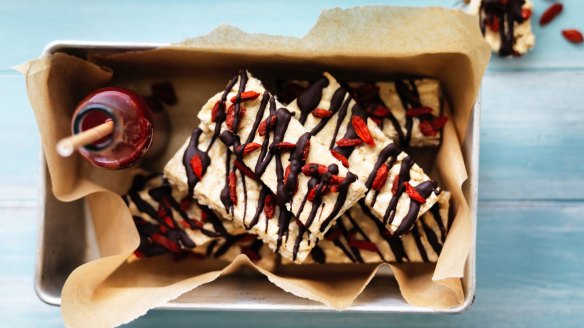
They're the stats you've probably heard a million times before: half of all kids aged 2-15 don't get their recommended serves of vegetables each day. Too many of them eat junk food far too often – 60 per cent eat hot chips at least once a week, one-third eat potato chips at least three times a week. And the result? Kids are getting bigger, and they're suffering from subsequent conditions like cardiovascular disease and Type 2 diabetes. Current stats say that about a quarter of all Aussie kids are overweight or obese, and the trend shows no sign of changing.
All of this is to say: what you pack in your kids' lunchbox has a reach far beyond how they perform in their NAPLAN test, says nutritionist Lyndi Cohen. "What kids eat and how they eat really dictates how they'll eat as adults. Sitting down to dinner, eating a healthy breakfast, filling up on vegies at lunchtime – all these things help kids learn healthy habits that they can then take into adulthood." And of course, the short-term benefit of a healthy, balanced lunchbox is that kids have adequate energy to concentrate all day long.
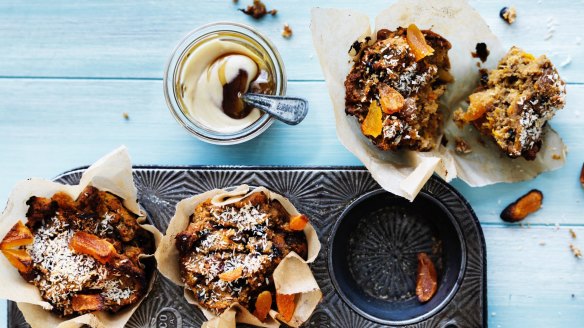
What does a healthy lunchbox look like?
"A healthy school lunchbox will include a mix of low-GI carbohydrates, protein and some healthy fats," says Cohen, who says lots of parents approach her about healthy lunchbox ideas. "That might look like a whole grain wrap with chicken and avocado, a wholemeal sandwich with egg and mayonnaise, a whole grain sandwich with Vegemite and cheese. You don't have to overthink it – simple combinations work well for kids," she says. Cohen says she doesn't worry too much about recommended servings when it comes to kids. "It's better to make sure they're eating a range of fruit, vegetables, whole grains, proteins and healthy fats, rather than getting hung up on how much of each they're eating."
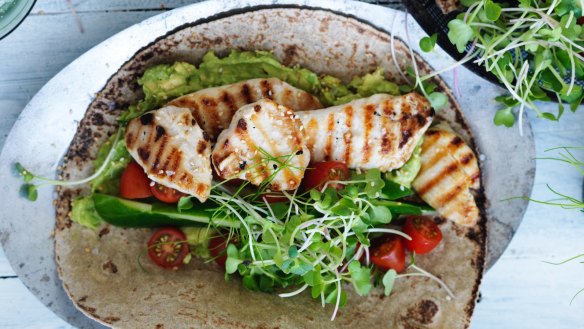
Sandwiches and beyond
For Jody Allen, who runs the popular website Stay at Home Mum, packing lunch is a fine art. "Nobody I know has time to pack a lunch from scratch every day," she says. "I make everything in big batches and freeze, so it's ready to go in the morning." On Sunday nights Allen freezes sandwiches, zucchini slice ("For when kids get sick of sandwiches!") and in winter, gets creative with hot lunches. "Invest in a proper Thermos and fill it with a hot lunch in winter," she says. "Kids love it." Allen packs meatballs in tomato sauce with a slice of sourdough, cocktail sausages (she pairs them with a multigrain bread roll for on-the-go hot dogs), and vegetable soup.
If your child has simple tastes and prefers one spread (like Vegemite) only, gradually try to add more elements, "like perhaps a slice of cheese", says Jess Beaton, of One Handed Cooks. When building sandwiches, start with a healthy fat (such as avocado or ricotta), protein (leftover roast meat, egg, tuna) and then some vegies (such as sliced cucumbers or baby spinach).

Snacks and treats
Fruit and veg are your best options, says Cohen – they're cheap, nutritious and easy to prepare. "Fruit and veg both have those complex carbs we need to power through the day, but they're low in kilojoules." Allen, who is based in Queensland, freezes watermelon, orange quarters, berries and grapes for fruit with staying power. If your kids won't eat fresh fruit, dried is still a good option. "I love sultanas," says Cohen. "They're a nice sweet treat but they still pack some fibre." Cohen also suggests cheese sticks ("Cut your own sticks from a block of cheddar. It's cheaper than the pre-packaged ones.") and full-fat Greek yoghurt – a good source of dairy and probiotics. Allen freezes yoghurt in pouches. "It freezes really well in pouches (in the tubs it tends to get a bit watery), plus it keeps the lunchbox cold, and the texture becomes sort of ice-cream-like, which kids love."
As for packaged snacks and treats, Cohen says she sees the appeal of muesli bars and the like for parents. "They're convenient and can seem quite healthy," she says. "But," she warns, "many muesli bars are actually made for adults in terms of their portion sizes, meaning your seven-year-old is getting way more kilojoules than they need to." If you do want to pack a muesli bar, make your own or buy the kid-friendly Uncle Toby's Chewy range. And as for the odd treat, Cohen says go for it. "I think it's fine to have treats in the lunchbox every now and then – maybe every Friday, you put in a small packet of chips. But Monday to Thursday, you give them a packet of popcorn instead, or a packet of roasted chickpeas."
What to drink
In summer, freeze a water bottle so that by lunchtime, it's thawed but still cool. While we parents used to chug Poppas at school (or juice boxes, or fruit boxes, depending on your state), unsurprisingly, Cohen says she wouldn't recommend these. "Fruit juice isn't the best pick – it's stripped of fibre and full of sugar. Milk is a far better choice. There's calcium, protein and the healthy sugars from lactose."
Presentation is key
Poor presentation: it's not just a way to eliminate MasterChef contestants. Cohen says kids often reject food because of how it's packaged or presented. "Kids are really textural," she says. "They won't eat things that are soggy or too hot or too cold, and I don't blame them!" She suggests thinking about the vessels you're packing the lunch in. "A cooler pack will help keep things cool, as well as keep the food safer." With fruit, cutting it up and putting the pieces in a container makes it more attractive to them. "With bananas and peaches, it's almost compulsory to put them in a container – a squashed banana is a traumatic experience for a kid!" The same goes with sandwiches, she says. "There are so many lunchboxes now with special compartments for sandwiches, there's really no excuse for a squishy, soggy sambo!"
Empowering kids
Everyone we spoke to for this article recommended giving your kids some control over their own lunchbox. "If you're making a big batch of snacks, get the kids involved," says Beaton. "If kids have helped with the cooking, they'll be more likely to actually eat the food."
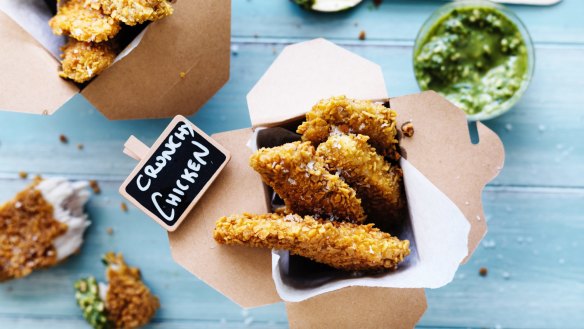
Fussy eaters
Do a little detective work. "Kids sometimes find it hard to articulate what it is they don't like about a food," says Cohen. "For instance, some will eat fresh tomatoes but won't go near roasted tomatoes – and to adults, that's baffling because we see them as the same thing. Ask them why they don't like a particular food, and prompt them with ideas – is it too soggy? Too salty? Too sweet? Sometimes they won't have the words." You could also ask them if there's someone in their class who has a great lunchbox, and ask what's in it, or invite them to come grocery shopping with you to choose a snack and a piece of fruit for their lunchbox. "Having ownership and control can help them feel more empowered." This extends to the lunchbox itself, says Cohen. "Get them to decorate their lunchbox, or choose their own – little things like that make them excited for lunch."
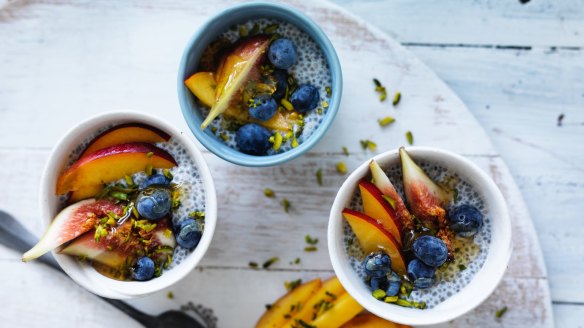
A note on allergies
Educate yourself on your child's school policy when it comes to allergies, says Jess Beaton, from One Handed Cooks. And remember, even if certain foods are forbidden, you can work around limitations. "If your school doesn't allow nuts, for instance, you can sub sunflower seeds for pinenuts in pesto, or make tahini-free hummus for sandwiches. If your school forbids eggs, you can use chia seeds and apple puree to bind muffin or bread mixes."
The best lunchboxes
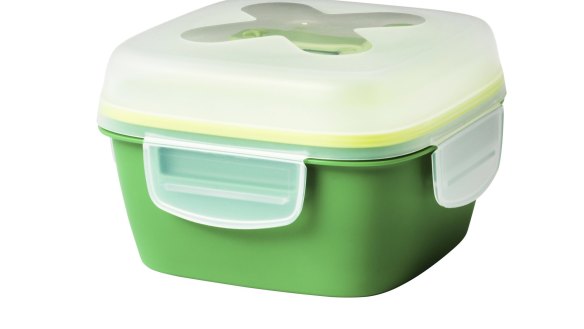
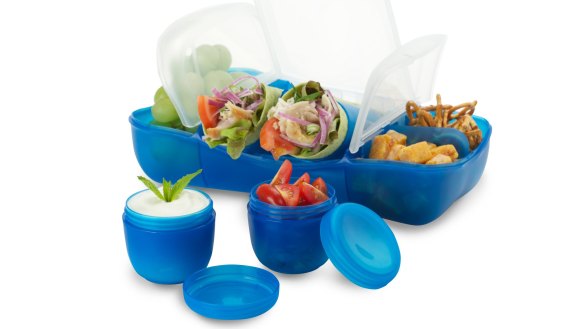
Nude Food Movers Envirobox, available at Big W, $10.
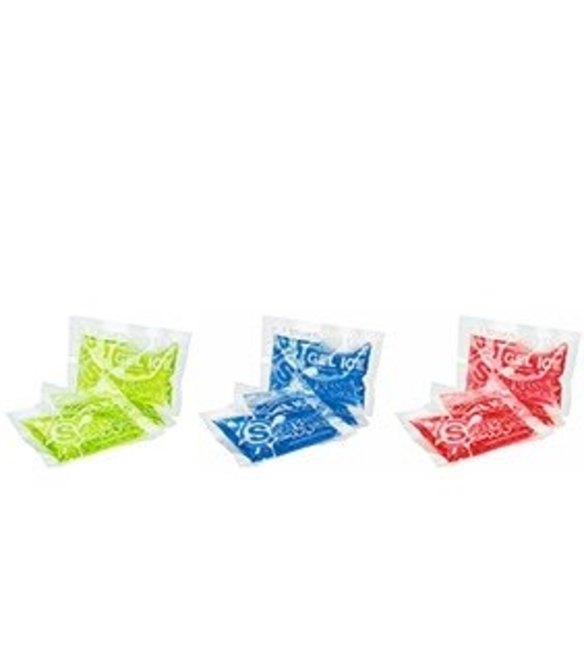
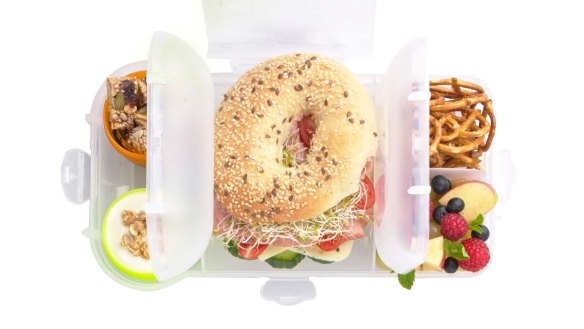
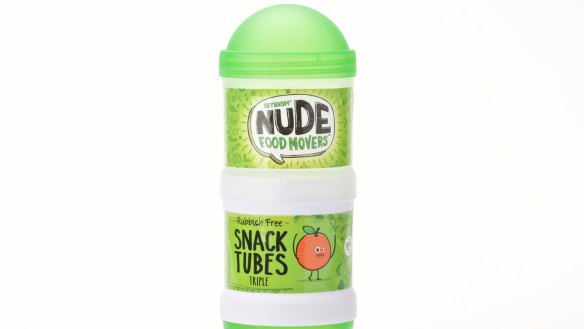
Nude Food Movers snack tubes available at Coles, Big W, Officeworks, Target and Spotlight. From $4.
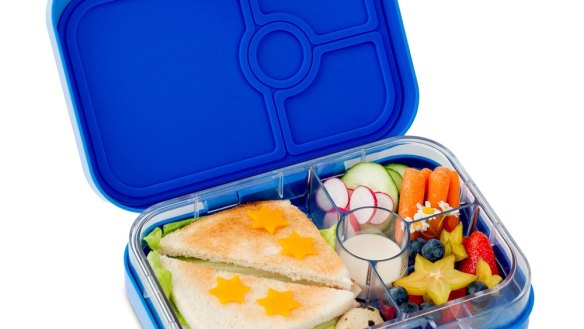
The best recipes from Australia's leading chefs straight to your inbox.
Sign up